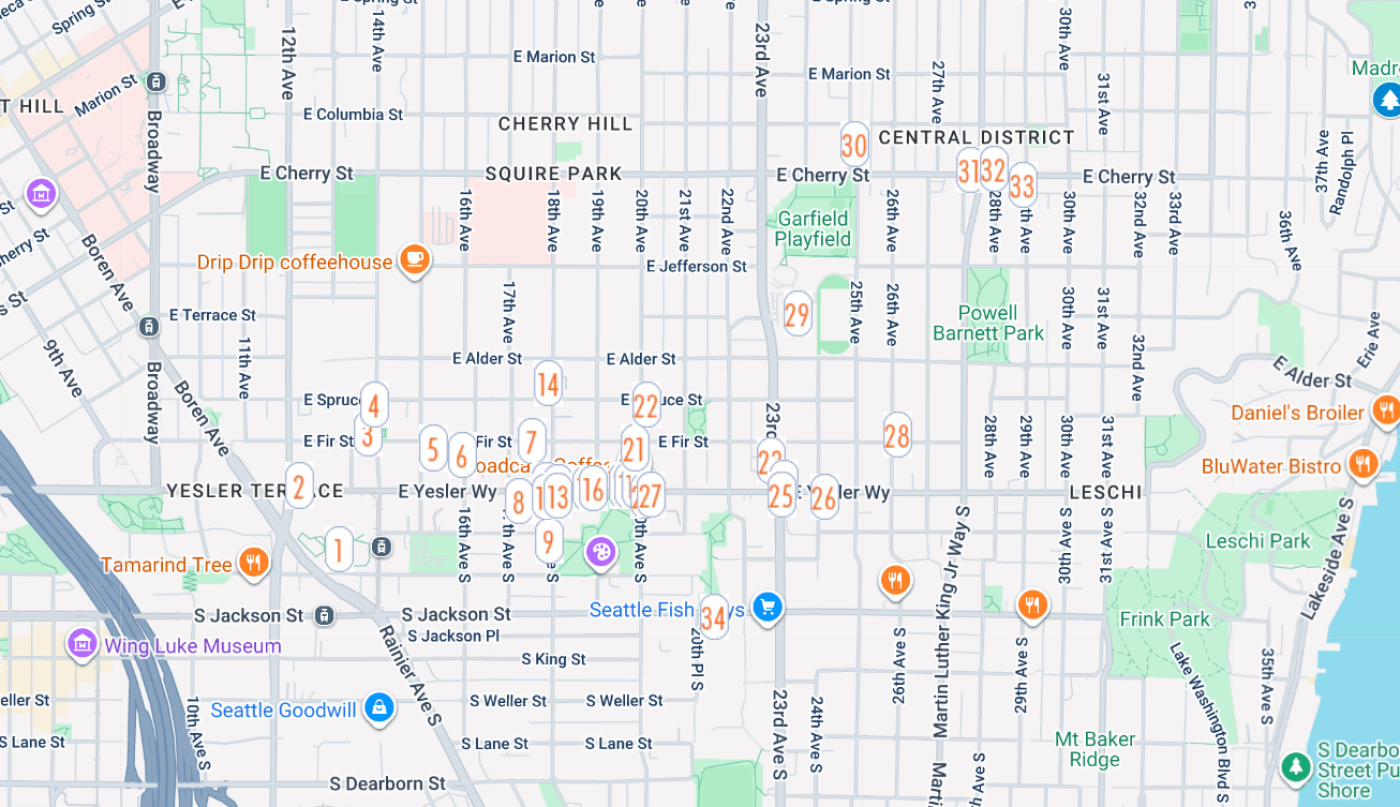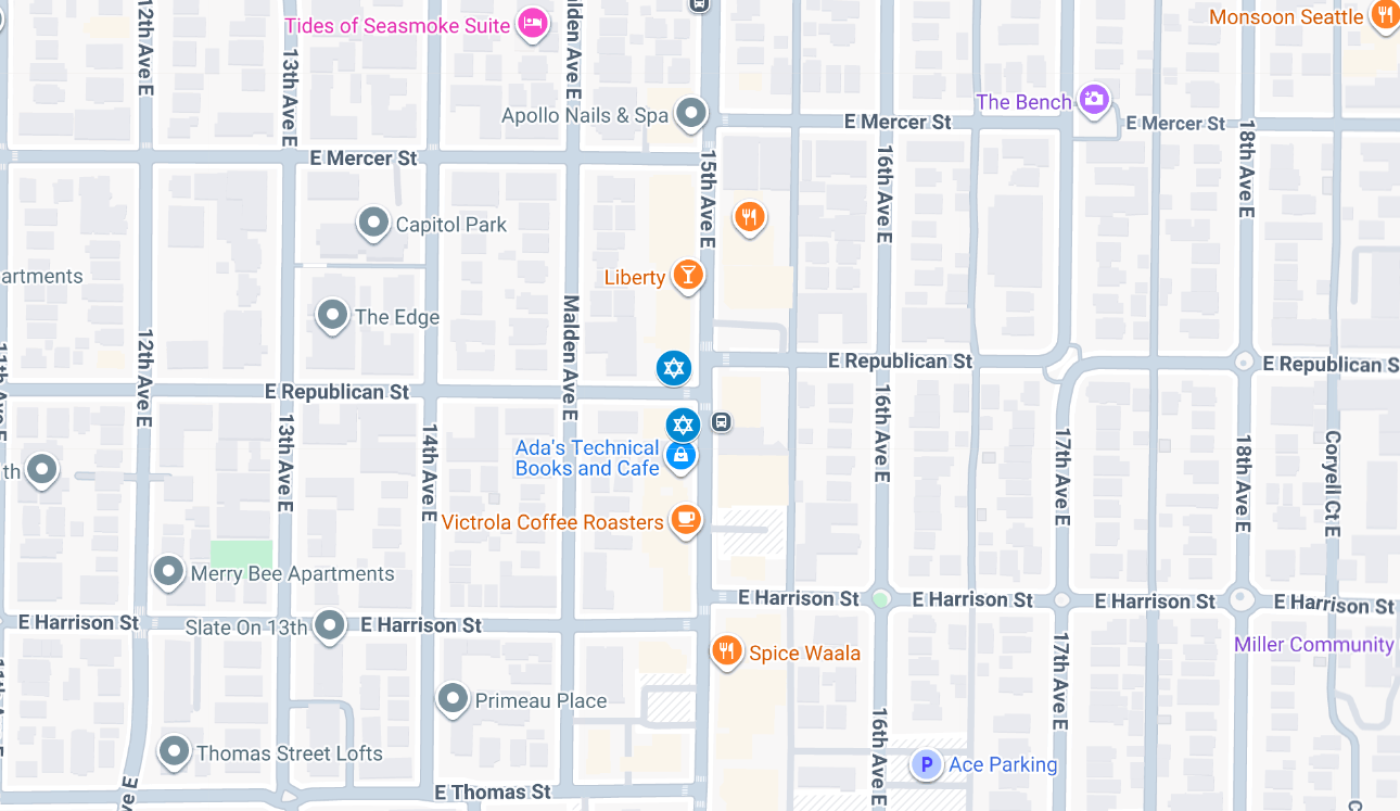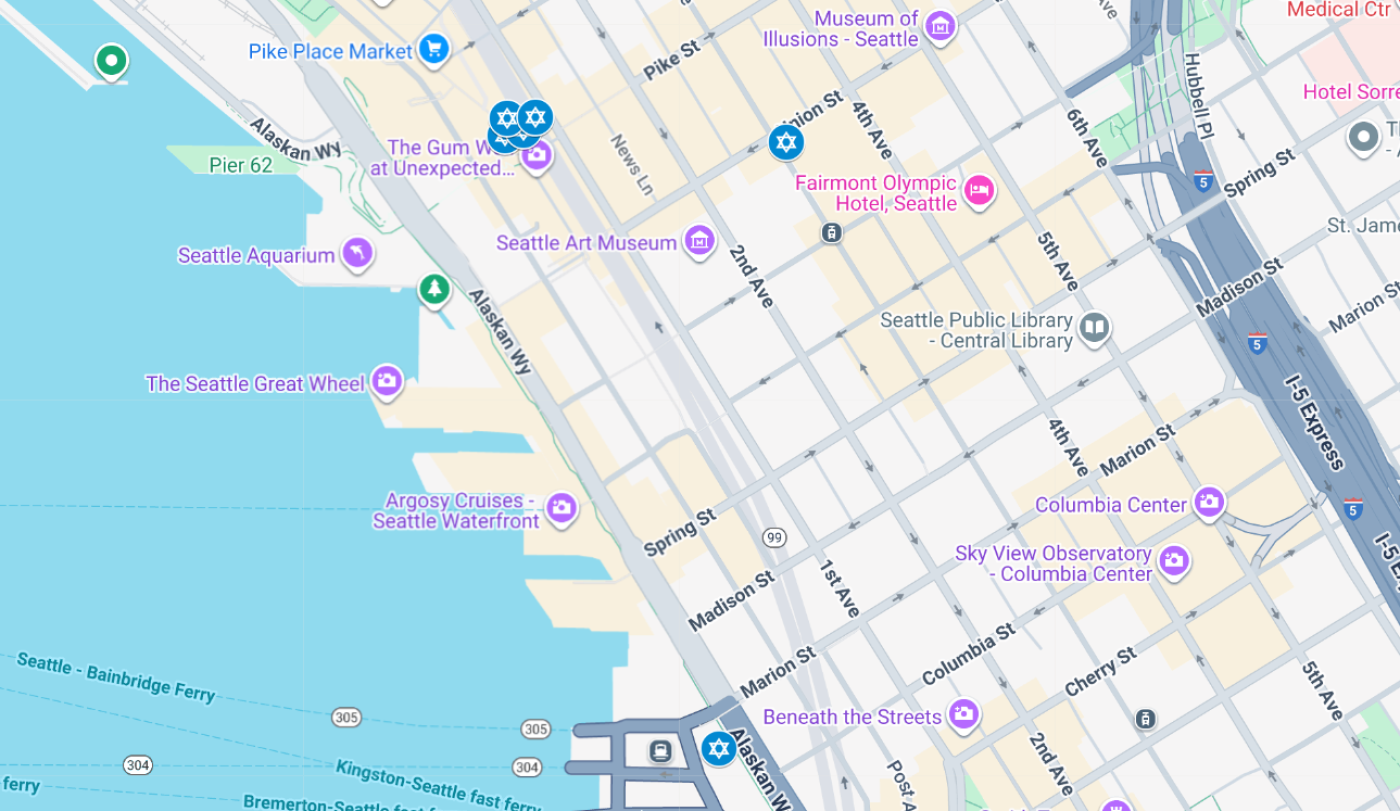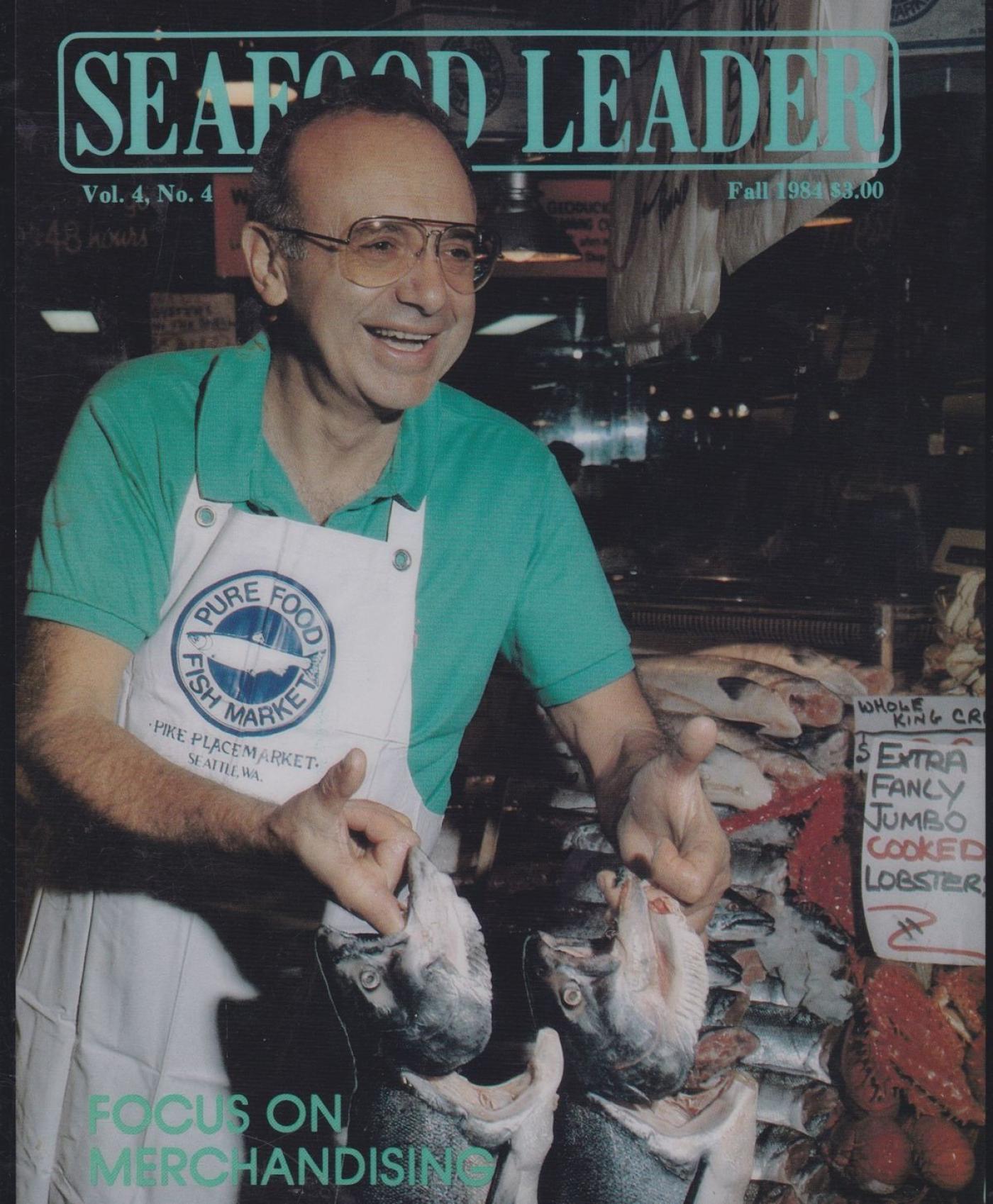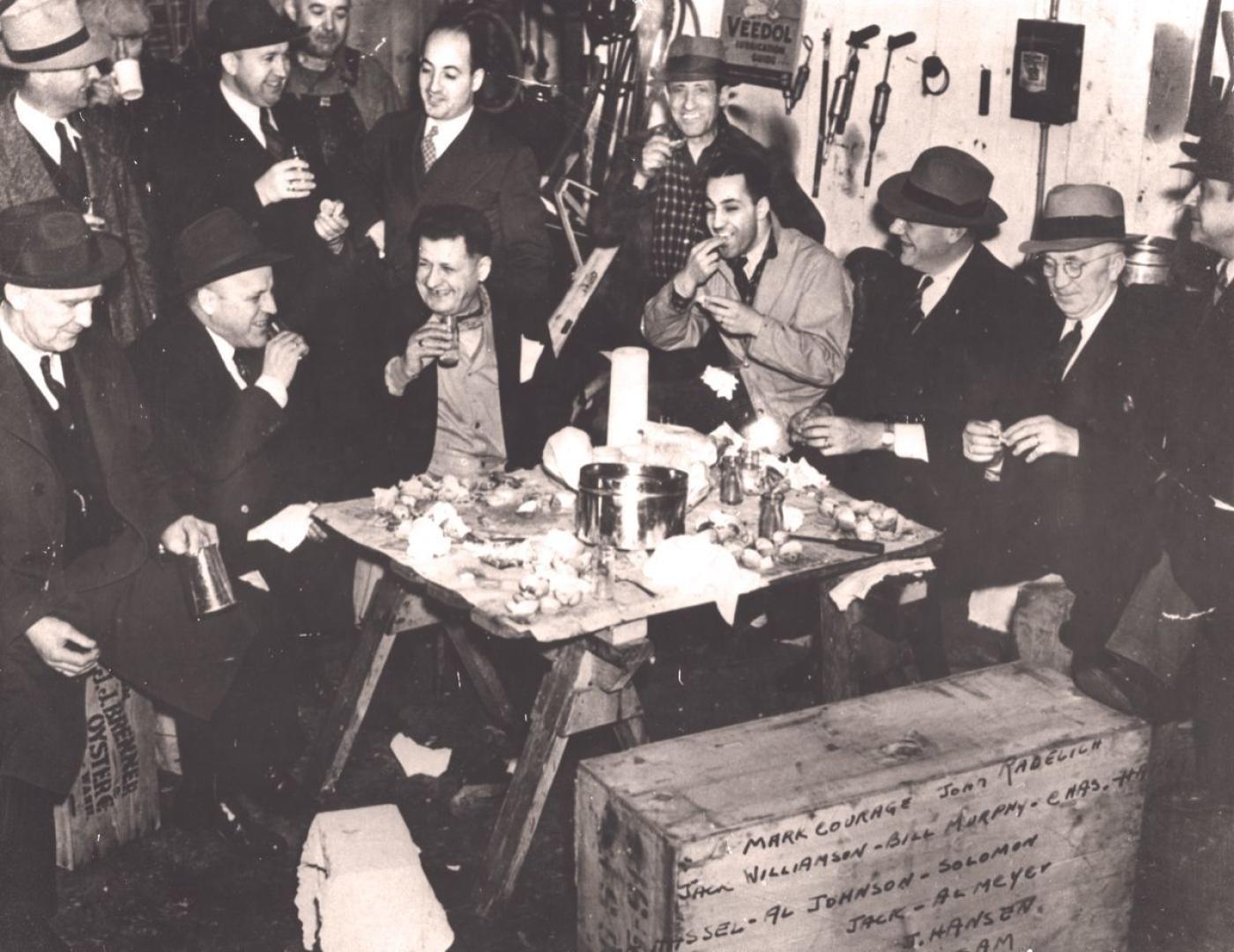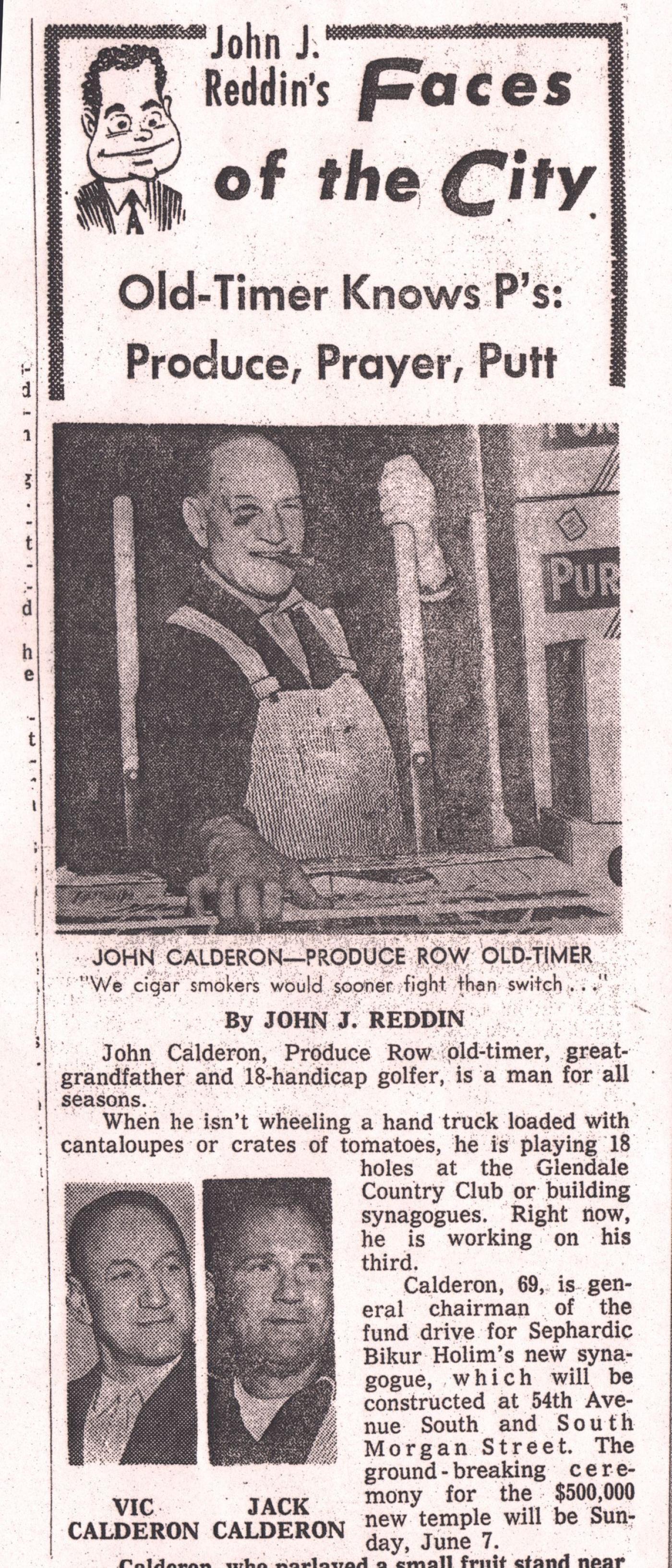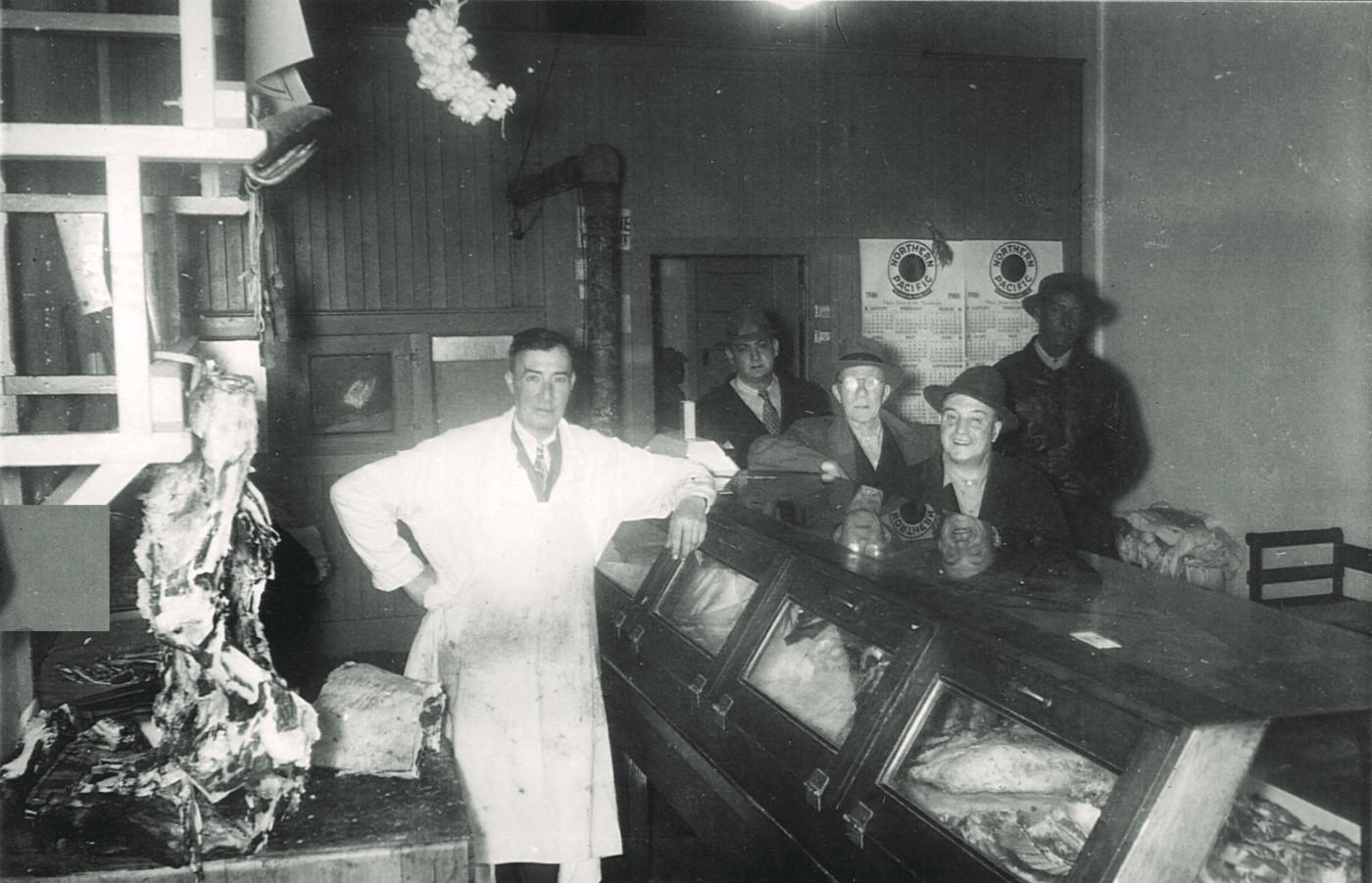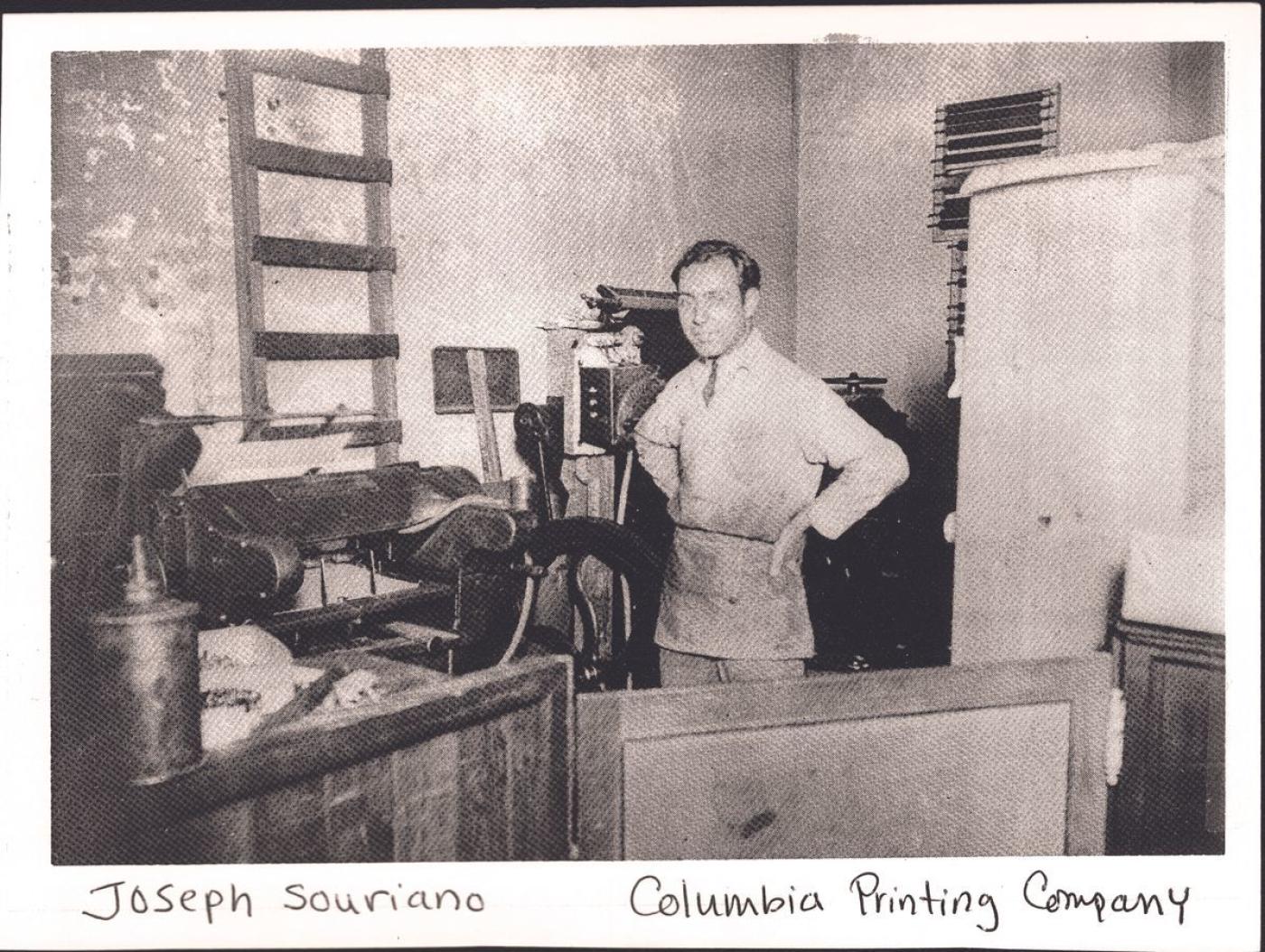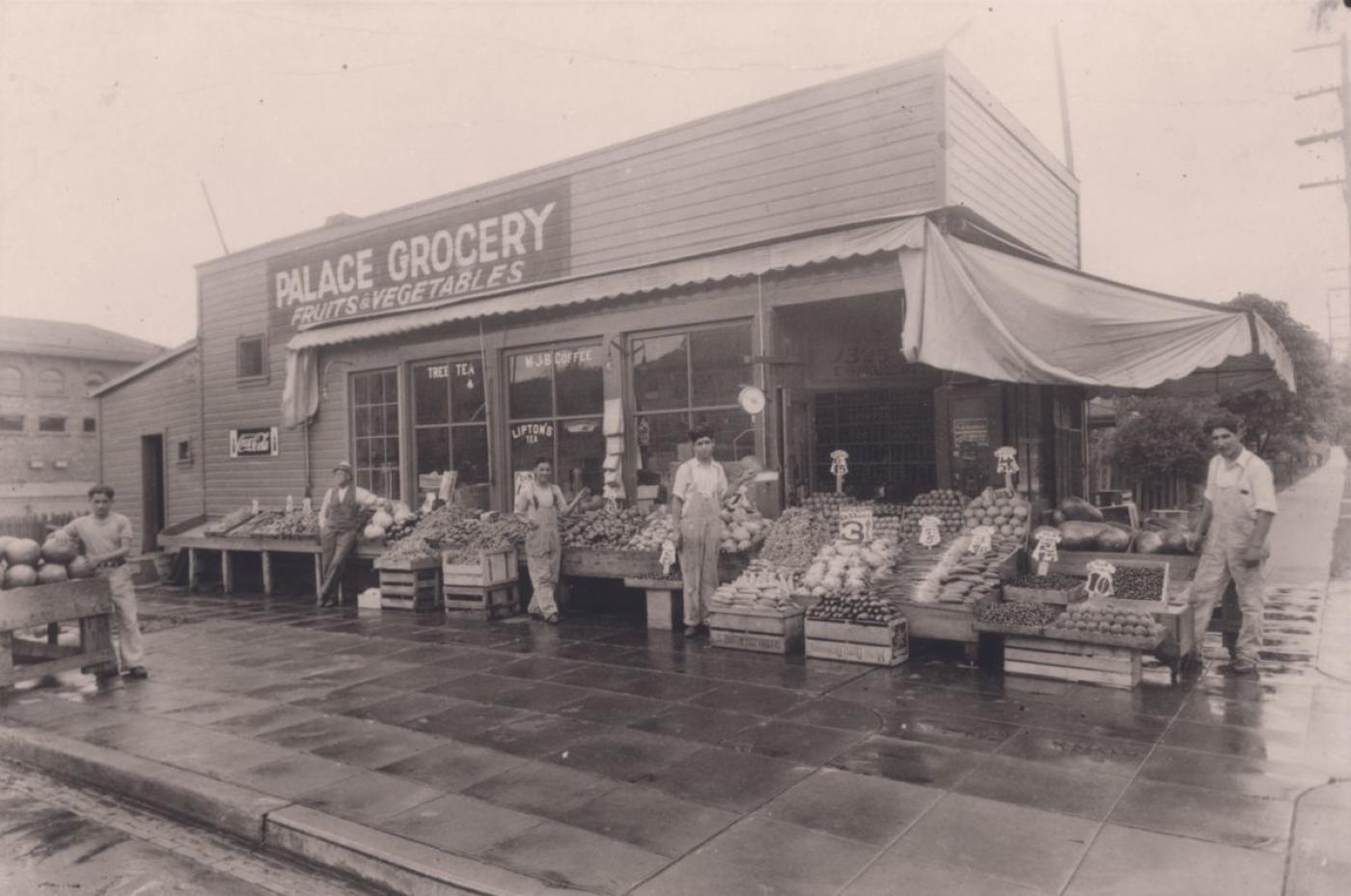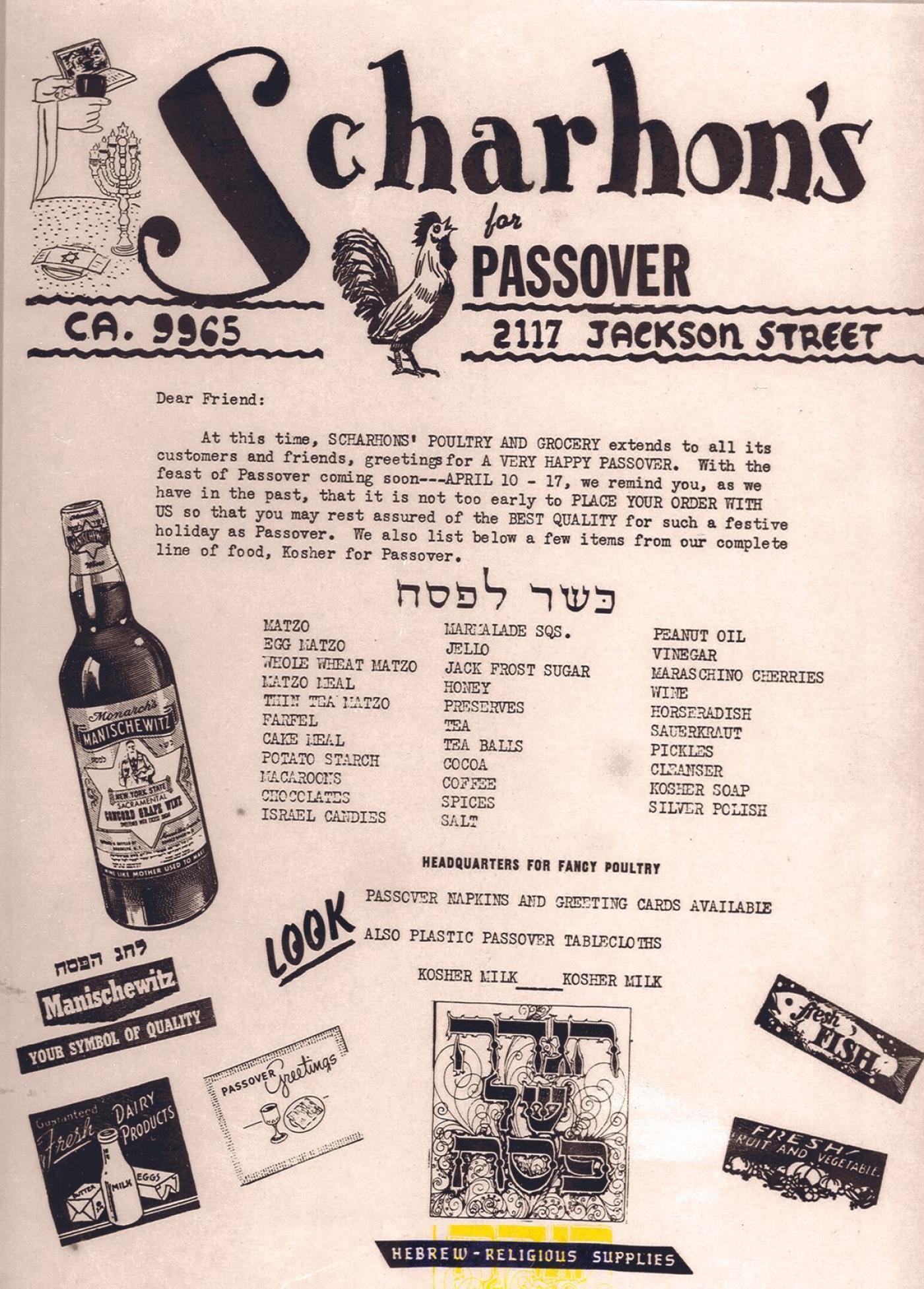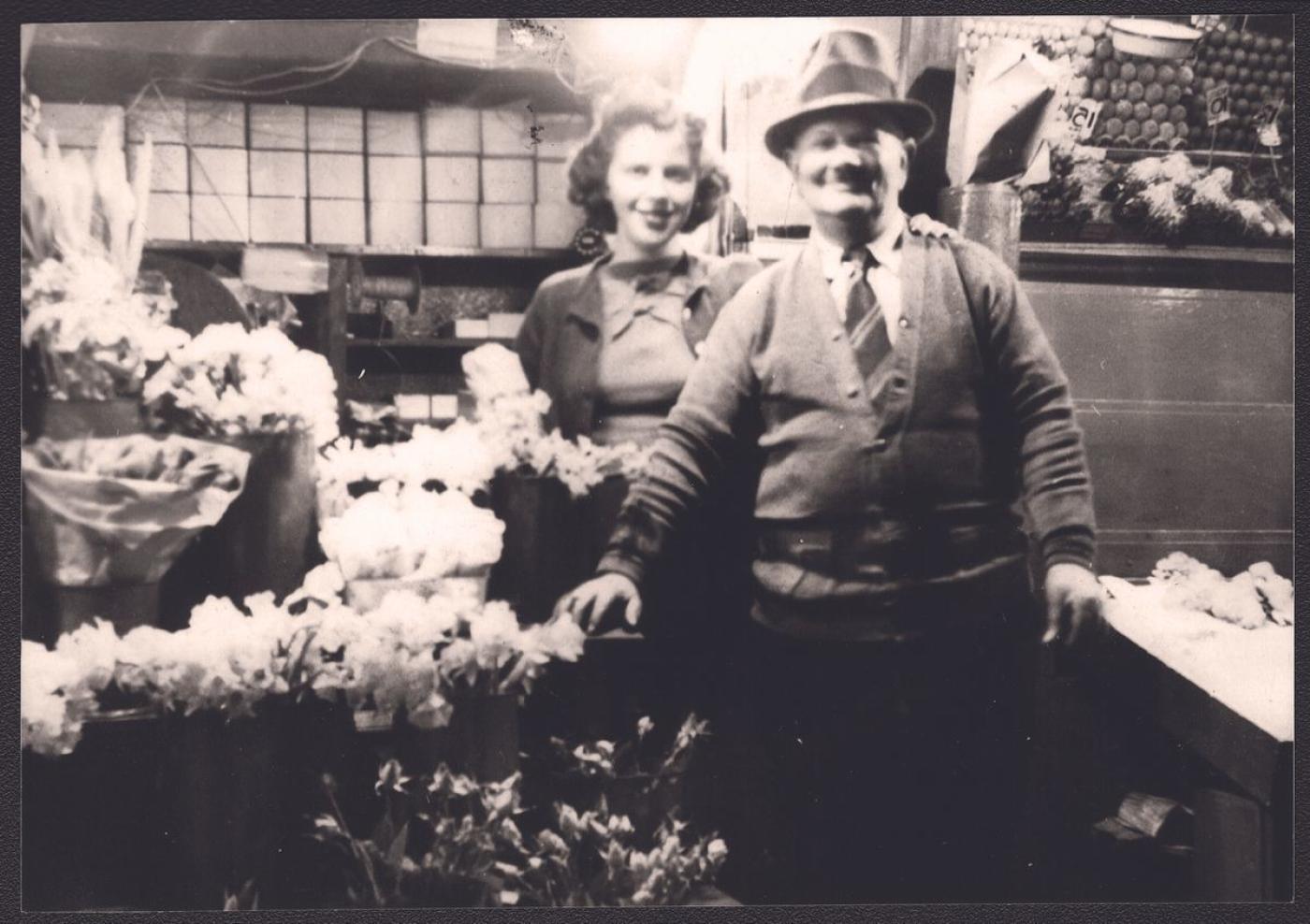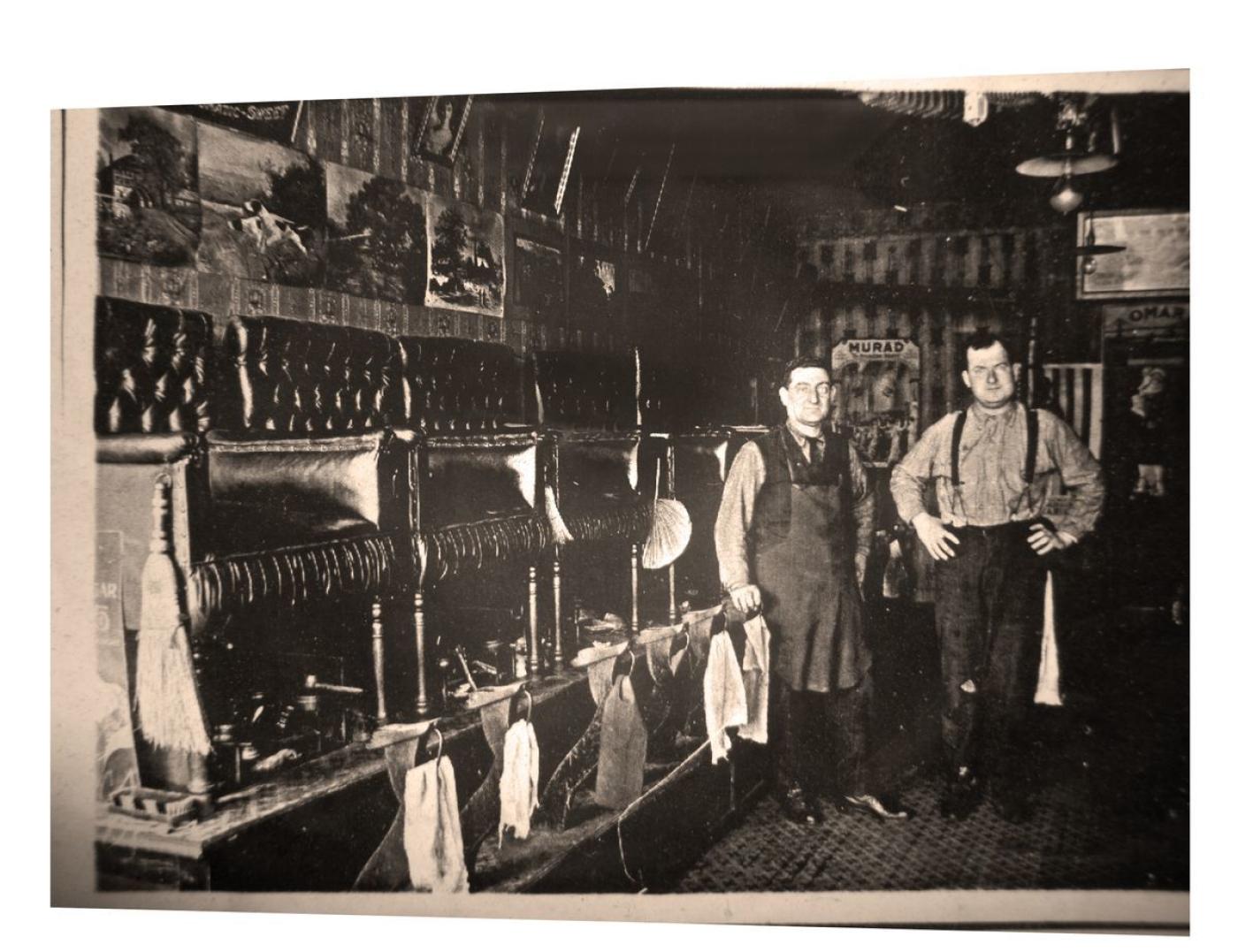Discover Seattle’s Sephardic Story
The Seattle Sephardic Walking Tour, offered by the Seattle Sephardic Network in partnership with the Washington State Jewish Historical Society, explores the rich history and culture of Seattle's Sephardic Jewish community. It focuses on the Central Area, where this community once thrived, highlighting its synagogues, schools, and businesses. The tour, available as a 2.25-mile walking tour or a bus tour, features community members as guides who share their personal stories and experiences. Participants can expect to learn about the community's past and its enduring presence in Seattle today, including a Sephardic treat along the way. This page is an extension of the Shalom! Sefarad exhibit. Click through the page to learn more about the Sephardic businesses, among others, that have shaped the city of Seattle.
Sephardic Walking Tour
Stories Tour Locations
Stop 1: Sephardic Bikur Holim, 13th Ave S. & S. Washington St
Stop 2: Seattle Curtain Manufacturing Co., E Yesler Way & 12th Ave
Stop 3: Washington Hall, 14th Ave & E. Fir St. (NW Corner)
Stop 4: Palace Grocery, 207 14th Ave & Spruce St
Stop 5: Ezra Bessaroth Synagogue, 15th & E. Fir St. (SE Corner)
Stop 6: American Kosher Meat Market (1st location 1925-1931)
Stop 7: Ahavath Ahim Congregation, Between 17th & 18th on E. Fir St. (South side of street)
Stop 8: Ashkenazic Bikur Cholim, 17th Ave S. & E. Yesler Way (SE Corner)
Stop 9: Settlement House, 18th Ave & Main St
Stop 10: Tokuda Drugstore, 18th & E. Yesler Way (NW Corner)
Stop 11: Kirkor, 18th & E. Yesler Way (SW Corner)
Stop 12: Brenner Brothers Bakery, 18th Ave & E. Yesler Way (NE Corner)
Stop 13: Original Brenner Brothers Bakery, 18th Ave & E. Yesler Way (SE Corner)
Stop 14: Mikveh, 18th Ave between E. Spruce & E. Alder Streets
Stop 15: Barber, Between 18th & 19th Avenues on E. Yesler Way (North side)
Stop 16: Harris' Kosher Butcher Shop, Between 18th & 19th Avenues on E. Yesler Way (North side)
Stop 17: Condiotti's Confectionary, Between 19th & 20th Avenues on E. Yesler Way (North side)
Stop 18: Kavanah Coffee House, 20th Ave & E. Yesler Way (NW Corner)
Stop 19: Jack's Grocery, 20th Ave & E. Yesler Way (NW Corner)
Stop 20: Economy Grocery Store, 20th Ave S. & E. Yesler Way (SE Corner)
Stop 21: Sephardic Bikur Holim Cong., 20th Ave & E. Fir Street (SW Corner)
Stop 22: Herzl Synagogue, 20th Ave & E. Spruce Street (SE Corner)
Stop 23: Lippman's Bakery, 119 23rd Ave & E. Yesler Way
Stop 24: Henry L. Yesler Memorial Public Library, E. Yesler Way & 23rd Ave (NE Corner)
Stop 25: Sam's Bakery, 23rd Ave S. & E. Yesler Way (SE Corner)
Stop 26: 24th Ave Market, 24th Ave S. & E. Yesler Way (SE Corner)
Stop 27: American Kosher Meat Market (2nd location from 1932) 24th Ave & E. Yesler Way (SE Corner)
Stop 28: Machzikay Hadath Synagogue, 26th Ave & E. Fir Street (NE Corner)
Stop 29: Garfield High School, 400 23rd Ave
Stop 30: Seattle Talmud Torah, 720 25th Ave, between E. Cherry & E. Columbia Streets
Stop 31: White Kosher Meat Market, North side of E. Cherry St, between 28th Ave & Martin Luther King Jr Way
Stop 32: Brenner Brothers Bakery, NE corner of E. Cherry St. & Martin Luther King Jr Way S.
Stop 33: Varon's Kosher Meats, E. Cherry Street, on the corner of 29th Ave (South Side)
Stop 34: Scharhon's Kosher Market, Jackson St & 20th Pl S
Stops Continued
Additional Places of Interest
Pacific Fish & Oyster
Pure Food Fish Market at Pike Place Market
United Fruit Company
Queen City Market Florist
Palace Fish Co
Publix Fruit and Produce Co.
Allen 5th Avenue Jewelers
Angel's Shoe Repair
Columbia Printing Company
Sephardic Brotherhood Cemetery, 1230 N 167th St
Ezra Bessaroth
Sephardic Bikur Holim
Kline Galland Home (Seward Park)
Madrona Park
Details regarding a few of these stops are below.
Pure Food Fish Market
Jack Amon came to America from Turkey in 1911 and immediately began selling seafood from a stall at Pike Place Market. He bought his own fish stand there in the 1950s and eventually turned management over to his son, Solomon, so he could retire. That business – Pure Food Fish Market – continues to operate as a long, narrow counter inside the heart of Pike Place Market. Among other things, the shop is famous for its fragrant open-air display containing several different varieties of delectable smoked salmon. Pure Food is the last remaining fish stall at Pike Place Market that a Sephardic family owns. Although Solly no longer manages day-to-day operations of the business, he still shows up to work every weekday!
Pacific Fish & Oyster Co.
Nessim Alhadeff in 1904 became the first Sephardic Jew to immigrate to Seattle from Rhodes. He sold fish out of a basket, then a pushcart, and eventually a horse-and-buggy. Nessim spoke fluent Greek, making it easy for him to connect with Pike Place Market vendors who had emigrated from Greece. He opened Palace Fish Co. along Seattle’s waterfront in 1912, selling product to his Market contacts, local restaurants, and (on Thursdays and Fridays) to corner grocery stores that had a lot of Catholic customers. His three sons – Charlie, Jack and Ike – eventually ran the family’s seafood business under the name Pacific Fish & Oyster Co. The brothers distributed salmon and halibut nationwide, buying fish directly off the boats that docked at seaport towns. They also operated salmon canneries in the states of Washington and Alaska. You can listen to Nessim's son, Charles's, oral history here.
United Fruit Company
Descending from a long line of rabbis, David Mossafer was advised by his father: “Don’t be a rabbi. It’s not an easy life.” So he trained as a boot maker in Rhodes until the Young Turk Revolution compelled his exit for America at age 19. In 1909, he resettled in Seattle and opened a shoe repair shop. By 1912, he had developed lung problems from the fumes and needed to find a new line of work. He opened a fruit stand in Pike Place Market with his relative, Marco Franco. For David, Marco and other Sephardic Orthodox Jews, working at the Market on Saturdays during the Sabbath Day of Rest was a difficult decision – but a necessary compromise to keep the business going. By 1928, David’s business had grown into a chain of 18 produce stands throughout the Seattle area called United Fruit Company.
Publix Fruit & Produce Co.
John Calderon arrived in Seattle in 1914, having left his home in Turkey to avoid conscription into the Army. After working in the shipyards during World War I, he went into the produce business as a buyer for two supermarket chains. With limited capital, John opened his own fruit and vegetable market in 1931. Sons Vic and Jack helped out in the afternoons. John’s wife Mathilda provided money from her household savings to help grow the business. At its peak, Publix Fruit & Produce Co. operated 30 trucks and became the primary produce wholesaler in Seattle, selling to almost every big restaurant in town, as well as hotels, ships and hospitals.
American Kosher Meat Market
Each Thursday, Joseph Romey’s American Kosher Meat Market squawked with activity after receiving its weekly delivery of freshly killed whole chickens. Jewish families stood in line to buy the still-warm kosher fowl, which would be prepared and served during Friday night’s traditional Sabbath dinner.
Columbia Printing
When Turkish immigrant Joseph Souriano opened Columbia Printing Company in the 1930s, he became the only printer in town to feature Hebrew type. As a result, the Jewish community relied on him as a source for bar mitzvah, bat mitzvah and wedding invitations.
Condiotti's Confectionary
Behor “Benny” Condiotti cooked candies and sweets in huge copper and brass pots, stirring with different sizes of wooden paddles. He then poured his confections onto a huge marble slab and cut them into various shapes and sizes. His recipes originated from his homeland of Turkey, but he also specialized in Greek-style yogurt that he sold in a glass.
Economy Grocery
On a typical evening, the Sephardic men of Kosher Canyon would gather around the potbelly stove near the front of Economy Grocery, a store run by Al and Rachel Uziel. The men would sip kave Turco (Turkish coffee), take a nip of Raki (a Turkish aperitif) and echar lashon (a Ladino phrase meaning to sit and gossip).
Palace Grocery
Near his family home at the bottom of Kosher Canyon, Rhodes immigrant Israel Fis (second from left) ran Palace Grocery. His customers sometimes waited until Palace’s home-delivery truck was leaving so they could catch a free ride up the hill with their full bags of produce. (1925).
Sam's Bakery
Nessim “Sam” Alhadeff baked breads and pastries in a brick oven heated by long wooden logs that burned to ash. Children in Kosher Canyon favored Sam’s tiny cream-filled pastries, which he called “Lucky Bites.” The centers usually had white cream but occasionally the filling was pink, which would reward the purchaser with a free candy bar.
Seattle Curtain Manufacturing Co.
Ralph Capeluto emigrated from Rhodes in 1920 and stayed in New York, where he repaired sewing machines for a living. While visiting his sister in Seattle, he met his bride-to-be, Rachel. She asked him: “How do you intend to support me?” He said he would open a candy store. She said: “Why not try something you know?” So they decided to make curtains. Ralph maintained the equipment and Rachel sold their wares. At the time, curtains were available only from manufacturers on the East Coast. By offering a local supply, Seattle Curtain Manufacturing Co. found a regular customer base in the city’s big department stores. The family-owned business continues to operate today, housed inside a former roller-skating rink.
Queen City Market Florist
Samuel Nahmias came to the U.S. from Turkey, able to read, write and speak only in Ladino. In the 1920s, he sold brightly colored waxed flowers near a downtown Seattle theatre. In the mid-1930s, he opened a fresh flower shop inside a downtown market and turned it into a thriving business: Queen City Market Florist. When it wasn’t raining, Sam would sit under the lamppost in front of the market calling out, “Gardenias: 25 cents!” or “Daffodils: 10 cents a dozen!” After working 16 hours on Saturdays, he put the money he earned in a corsage box and hopped a streetcar back home around midnight.
Allen's Fifth Avenue Jewelers
From 1940 to 1990, Isaac Ovadia sold jewelry at four different stores he owned throughout Seattle, including his pride and joy, Allen’s Fifth Avenue Jewelers. But Ike didn’t just sell jewelry, he also designed some of the pieces in his display case. Ike had an appreciation – and an eye – for fine art, having majored in business and minored in art at the University of Washington in Seattle. He once persuaded local abstract painter Mark Tobey to design pieces of jewelry for his shop, which Ike sold alongside his own exquisite designs.
Hearing that Seattle’s streets were paved with gold, Joseph Angel emigrated from Rhodes in 1910. He opened a shoe repair shop two years later with his brother Isaac. But times were tough, and Joseph’s son, Eli, had to quit school in ninth grade to help his father with the business. Eli’s son, Ray, took his father’s offer to work as an apprentice – and the rest is history. Angel’s Shoe Repair remains in business for more than 100 years after it began, with Ray in charge. He uses a sewing machine patented in 1880 and a stitching machine from 1912. Ray says it’s almost as if his grandfather and father are still at the shop. In many respects, they are!

